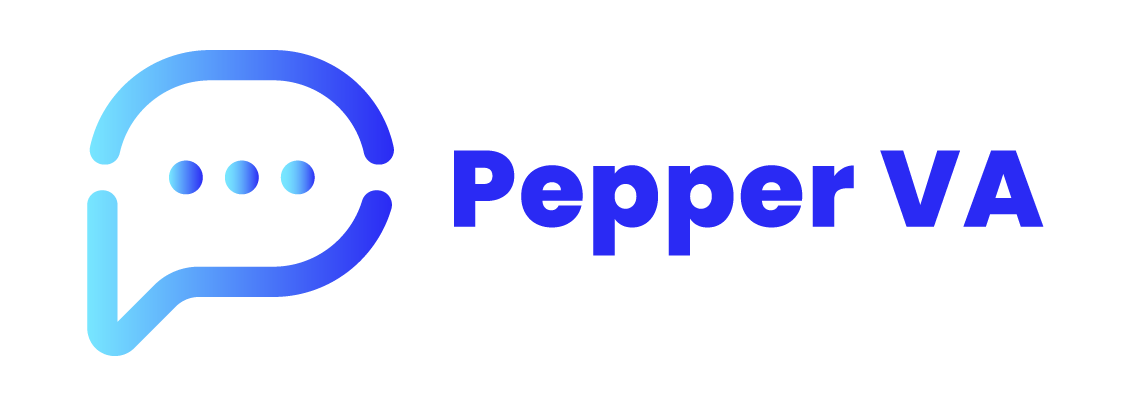Something remarkable is happening in workplaces everywhere. You know that feeling when technology finally “gets” you? That’s exactly what’s unfolding right now. Workers using generative AI tools can boost their performance by up to 40% compared to those without.
But here’s what caught me off guard: AI productivity isn’t just making digital assistants faster, it’s making them genuinely intelligent partners that actually anticipate what you need before you ask. Gone are the days when productivity tools simply automated repetitive tasks. We’re talking about systems that orchestrate complex workflows and make real decisions alongside you.
Balancing Productivity and Security
Here’s something that keeps executives awake at night. Your employees are already using AI tools you don’t know about. Right now, someone in your organization is probably feeding sensitive data into an unauthorized AI platform to meet a deadline.
The challenge of shadow AI discovery has become critical; you need to identify these hidden productivity tools before they create security nightmares or compliance disasters. Organizations that tackle this proactively are the ones successfully harnessing artificial intelligence in business while actually strengthening their security posture.
Getting to know about artificial intelligence in business helps you understand how employees are using these tools to boost productivity, automate tasks, and solve problems faster. Smart companies are realizing that understanding shadow AI isn’t about control—it’s about guidance that enables innovation while maintaining proper oversight and security standards.
Predictive Task Management Through Advanced Machine Learning
What if your assistant knew what you needed to do next week better than you do? Sounds impossible, right? Well, AI productivity systems are already making this reality for thousands of professionals. These aren’t your typical calendar apps that passively track appointments. We’re witnessing true cognitive partnership.
Intelligent Workload Forecasting
Your digital assistants are becoming eerily good at reading your work rhythms. They study how you operate, when you’re most creative, how long complex projects actually take you (not how long you think they take), and even which types of meetings drain your energy. The payoff? Productivity tools that automatically carve out thinking time exactly when you’ll need it most. It’s like having a personal productivity coach who never sleeps.
Proactive Resource Allocation
Remember that nightmare project where three deadlines crashed into each other? Advanced AI systems prevent exactly these scenarios by modeling your entire professional ecosystem. They’re not just looking at your tasks; they’re analyzing team dependencies, resource availability, and those sneaky bottlenecks that blindside human planners every time.
Smart Deadline Optimization
The most sophisticated virtual assistants now perform continuous risk assessment across all your commitments. Picture this: getting a heads-up three weeks before a potential problem becomes an actual crisis. These systems suggest alternative approaches, propose timeline adjustments, and sometimes even negotiate with other AI systems on your behalf.
This shift from reactive scheduling to predictive workflow management? It transforms your assistant from a digital notepad into a strategic thinking partner.
Contextual Understanding and Emotional Intelligence Integration
Something fascinating is happening with modern digital assistants; they’re developing something remarkably close to emotional intelligence. They’re not just processing your words anymore; they’re understanding your intentions and even picking up on your emotional state.
Natural Language Processing Breakthroughs
Today’s artificial intelligence in business applications handles conversations that would have completely stumped earlier systems. They remember what you discussed last week, notice when your communication style shifts (hello, deadline stress!), and adapt their responses accordingly. It’s conversational continuity that actually makes sense.
Adaptive Personality Matching
Your virtual assistants are becoming chameleons, in the best possible way. Prefer quick, bullet-point responses? They learn that. Need detailed explanations with context? They adjust. This personalization goes deep: timing preferences, notification styles, and even how much independence you want them to exercise. They’re essentially developing a professional personality that complements yours.
Advanced Intent Recognition
Here’s where things get really interesting. When you say something vague like “handle the Johnson situation,” a context-aware assistant knows whether you mean the budget crisis, the scheduling nightmare, or that contract negotiation that’s been dragging on forever. They piece together meaning from your recent conversations, current priorities, and established patterns.
This emotional intelligence integration elevates productivity tools from simple automation to genuine collaborative partnerships that understand the human story behind every task.
Autonomous Decision-Making Capabilities
We’ve reached a fascinating inflection point. Digital assistants aren’t just following your instructions anymore; they’re making independent judgments. Consider this: developers using AI tools see an 88% increase in productivity. That dramatic improvement largely stems from systems that handle complex decisions without constant human oversight.
Independent Problem-Solving Algorithms
Modern AI systems spot problems and fix them before you even notice there was an issue. Scheduling conflict? Your assistant analyzes everyone’s preferences and constraints, then implements the optimal solution automatically. We’ve moved from notification-based assistance to action-based AI productivity. The difference? Your assistant doesn’t just tell you about problems; they solve them.
Smart Escalation Protocols
Here’s what impressed me most: sophisticated systems know their limitations. They maintain confidence scores for every decision and automatically escalate to human oversight when uncertainty rises above specific thresholds. You get autonomous operation with built-in quality control, the best of both worlds.
Continuous Learning and Improvement
Each decision becomes part of an ongoing education. Virtual assistants track outcomes, adjust their algorithms based on results, and become increasingly accurate over time. They’re essentially developing professional judgment through accumulated experience. Pretty remarkable when you think about it.
This autonomous capability allows artificial intelligence in business to handle routine decisions independently, freeing you to focus on strategic and creative challenges that require uniquely human insight.
Multi-Modal Productivity Enhancement
Why limit yourself to typing when you could speak, gesture, or even use visual cues to communicate with your AI partner? The next frontier in digital assistants involves breaking down barriers between different interaction methods.
Voice, Text, and Visual Command Integration
Modern productivity tools blend communication methods seamlessly. Start a request by voice while walking to a meeting, add details through text during the session, and complete the task by sharing a photo afterward. The system understands it’s all one continuous conversation. No awkward handoffs or repeated explanations.
AR/VR Integration for Immersive Assistance
Augmented and virtual reality are revolutionizing how we interact with virtual assistants. Imagine your AI displaying relevant information directly in your field of vision during meetings or providing 3D project timeline visualizations you can manipulate with hand gestures. We’re approaching science fiction territory, but it’s happening now.
Cross-Device Synchronization
Your AI productivity experience follows you seamlessly. Begin a conversation on your phone during your commute, continue it on your laptop at the office, and wrap it up through your smart speaker at home. Each device contributes unique capabilities to create one unified experience.
Multi-modal interaction makes artificial intelligence in business more intuitive and accessible, letting you communicate with AI systems however feels most natural for each situation.
Advanced Security and Privacy Protection Frameworks
As digital assistants become more capable and handle increasingly sensitive information, security becomes absolutely fundamental. Modern AI systems are being architected with security as a core feature, not something added later.
Zero-Trust Architecture Implementation
The most secure productivity tools assume every interaction could potentially be compromised. They use end-to-end encryption for all communications, require continuous authentication, and maintain separate security contexts for different data types and tasks. Paranoid? Maybe. Necessary? Absolutely.
Compliance Automation
Virtual assistants now automatically ensure all actions comply with relevant regulations, GDPR, HIPAA, and industry-specific requirements. They maintain audit trails, automatically delete data according to retention policies, and flag potential compliance issues before they become expensive problems.
Threat Detection and Response
Advanced AI systems continuously monitor their own behavior for anomalies that might indicate security breaches. They detect unusual patterns in user requests, identify potential social engineering attempts, and respond to threats in real-time. It’s like having a cybersecurity team built into your productivity suite.
These security frameworks ensure AI productivity gains don’t come at the expense of data protection or regulatory compliance.
Hyper-Personalization Through Advanced Analytics
Generic digital assistants are dying out. The future belongs to AI systems that understand your unique work patterns so thoroughly that their assistance feels almost telepathic.
Individual Productivity Pattern Analysis
Your virtual assistants track everything from your peak creative hours to your preferred task sequencing. They identify patterns you might not notice yourself, like how your creativity spikes after specific meeting types or how your focus varies with environmental factors. It’s workplace psychology meets artificial intelligence.
Behavioral Prediction Modeling
Advanced systems predict your needs with startling accuracy. They know when you’ll need to reschedule meetings, what information you’ll require for upcoming decisions, and even when you might need a break based on subtle changes in your work patterns. It’s predictive productivity at its finest.
Dynamic Interface Adaptation
Your productivity tools continuously evolve to match your changing needs. The interface highlights features you use most, information appears exactly when needed, and even the AI’s communication style adjusts to match your current stress level or energy state.
This personalization transforms artificial intelligence in business from generic solutions into truly customized productivity partnerships.
Collaborative Intelligence and Team Synchronization
The most exciting developments in AI productivity happen when individual digital assistants work together. Team-based AI collaboration is redefining how organizations approach complex projects.
Multi-Assistant Coordination
Picture your virtual assistants coordinating with colleagues’ AI systems to schedule meetings, share relevant information, and ensure everyone has what they need for collaborations. This happens automatically, without human intervention, creating seamless team workflows that just work.
Real-Time Team Productivity Insights
Productivity tools now provide managers with real-time insights into team performance, bottlenecks, and optimization opportunities. They identify when team members are overwhelmed, suggest workload rebalancing, and predict project timeline risks before they impact deliverables.
Integration with Enterprise Ecosystems
Modern artificial intelligence in business doesn’t exist in isolation. These systems integrate with existing enterprise software, maintaining consistency across platforms while adding AI capabilities to tools teams already trust.
Collaborative intelligence represents evolution from personal productivity to team-wide optimization, where AI becomes the invisible infrastructure, making teamwork more effective.
Future-Proofing Your Digital Assistant Strategy
The rapid evolution of AI productivity means today’s cutting-edge capabilities become tomorrow’s baseline expectations. Organizations wanting to stay competitive need strategies that anticipate this technological acceleration.
Investment landscapes are shifting dramatically. Companies are moving beyond basic automation to deploy AI systems that think, learn, and adapt. Virtual assistants are evolving from simple task executors to strategic partners handling increasingly complex responsibilities.
This transformation requires careful planning. Consider not just current capabilities but future potential. The digital assistants you implement today should be designed to grow and evolve with advancing technology, ensuring your productivity investments remain valuable over time.
Your Questions About AI-Powered Productivity Answered
What makes modern AI productivity different from traditional automation?
Traditional automation follows fixed rules, while modern AI productivity systems learn from experience, adapt to changing conditions, and make intelligent decisions based on context and user preferences.
How do digital assistants ensure data privacy while learning from user behavior?
Advanced digital assistants use privacy-preserving machine learning techniques, processing data locally when possible and using encrypted, anonymized datasets to improve performance without compromising individual privacy.
Which productivity tools integrate best with AI-powered digital assistants?
Most major productivity tools now offer AI integration, including calendar applications, project management platforms, communication tools, and document creation software that support seamless AI assistant connectivity.





